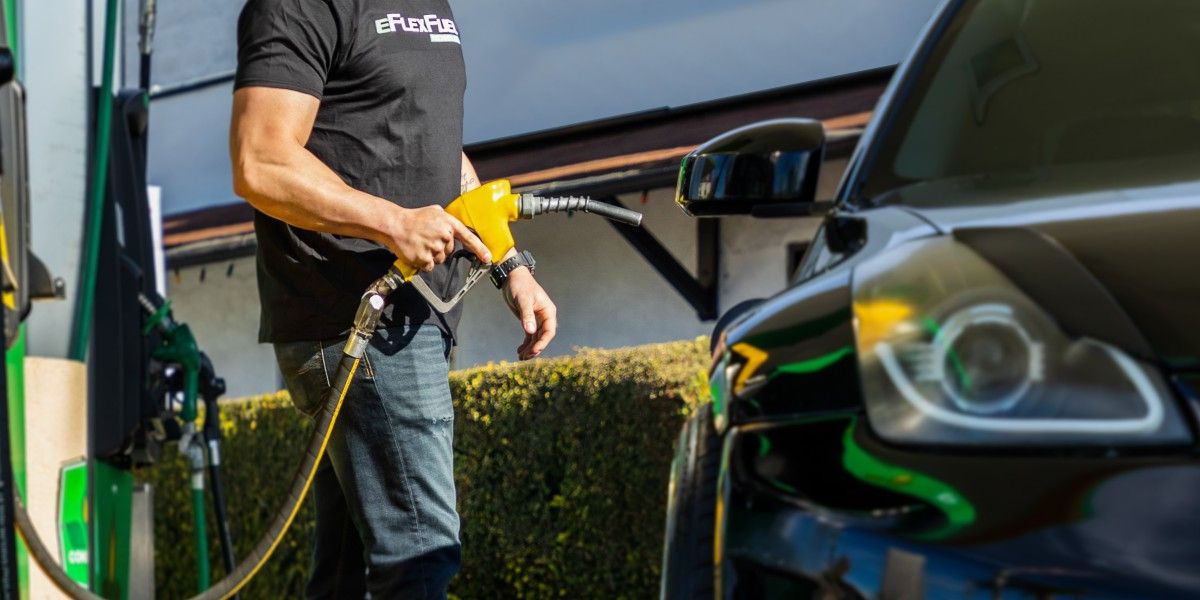If you've ever pulled up to a gas station and noticed a pump labeled "E85," you might wonder: Can I use E85 gas in my car?
What particularly makes E85 so tempting is that it’s more affordable than regular but has more octanes than premium. That’s because E85 is a special type of gas that consists of up to 85% ethanol and 15% gasoline, but it’s not suitable for every vehicle. In this blog, we'll explore what E85 gas is, and how to determine if your car is compatible with this high-performance fuel.
What is E85 Gas?
E85 is a blend of ethanol—a renewable fuel made primarily from crops like corn—and traditional gasoline. Ethanol is an alcohol-based fuel, and E85 contains a much higher percentage of ethanol than regular gasoline, which typically has about 10% ethanol (E10). The higher ethanol content in E85 makes it a cleaner-burning gas with fewer carbon emissions, which is better for the environment and the engine.
E85 also boasts a higher octane rating, generally around 100-105, which means it offers better engine performance especially on performance vehicles. But before you rush to fill up your tank, it's important to know if your car is equipped to handle E85 gas.
Can My Car Run on E85 gas?
The most important factor in determining whether you can use E85 in your car is whether your vehicle is a flex-fuel vehicle (FFV). Flex-fuel vehicles are specially engineered to run on any ethanol-gasoline blend, including E85. These vehicles generally have sensors and fuel system that can detect the ethanol content and adjust engine operation accordingly.
So how can you tell if you own a flex-fuel vehicle? Here are a few easy ways to check:
- Check Your Owner’s Manual: The easiest way to determine if your car can use E85 is by consulting your vehicle’s owner’s manual and see what fuel is recommended.
- Look for a Flex Fuel Badge or Yellow Gas Cap: Many flex-fuel vehicles have a badge or emblem on the rear of the car, or at least a yellow gas cap that often has a label “E85”.
- VIN Lookup: If you’re still unsure, you can use your Vehicle Identification Number (VIN) to search for your car's specifications online or with your manufacturer. Many car manufacturers provide tools for checking whether a vehicle is flex-fuel compatible.
- Contact a flex-fuel professional: Companies such as eFlexFuel that offer retrofit flex-fuel conversions will verify if you’re already driving a flex-fuel or not.
If your car is a flex-fuel, congratulations! You can safely run your vehicle on E85 gas. However, if your car is not an FFV, eFlexFuel offers a safe and performance enhancing way to retrofit your vehicle to run on E85. Using E85 in a vehicle that isn’t built or converted with a quality flex fuel system is a risky move and not recommended.
Conclusion: Should You Switch to E85 gas?
The key takeaway is that E85 gas is only compatible with flex-fuel vehicles that are either factory built or retrofitted to flex-fuel. With flex-fuel, you can take advantage of this high-octane, eco-friendly gas and enjoy the benefits of reduced emissions and potentially better engine performance. To find out more about the benefits of E85 gas, you can read our blog here.
For those driving non-flex-fuel vehicles, eFlexFuel is the most popular and safest way to convert for flex fuel. eFlexFuel’s performance oriented flex-fuel conversion systems are available for most vehicles. You can see the availability for your vehicle here.
As always, it’s important to check your vehicle's specifications and make informed decisions at the pump. Whether you’re looking to save money, enhance your car’s performance, or reduce your carbon footprint, E85 is an exciting option—when your vehicle is equipped for it!
